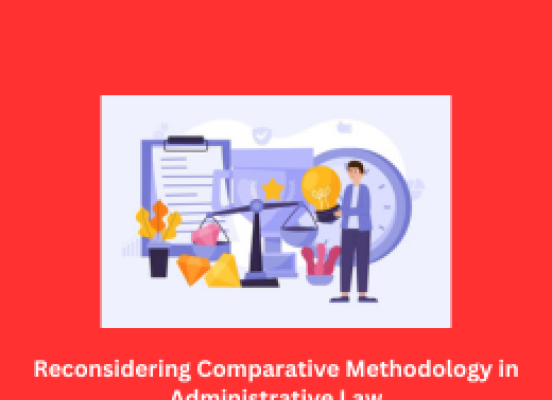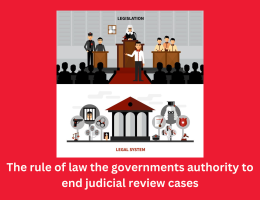
Reconsidering Comparative Methodology in Administrative Law
- By admin --
- Tuesday, 21 May, 2024
1. Introduction
Embedding administrative law into your general interests in research is among the perfect ways through which you can become an expert in the discipline particularly in the formative years of an academic career. This particular trend can be attributed to the fact that during feudal times; within states such as Persian Empires as well most important Muslim states it was common place to come across laws concerning administration. Others include cases dealing with Manchu Empires within China and Japan together with post-feudal monarchies though restricted; such as Republic of Venice as well as earliest constitutional forms of governments.
Between the early sixteenth and the seventeenth centuries, civil and common attorneys regularly employed the comparison to study foreign systems prior to the development of a science of administrative law in Europe. Without a methodological approach, comparison was not a developed form; it was the first time Edouard Lambert and Raymond Saleilles employed it in the inaugural Congress of Comparative Law held in Paris during 1900. Professor Lambert’s exposition on the basic theory and methods of comparative law which he presented during this memorable session clearly outlined the primary goals of comparative law thus laying ground for an autonomous area of study. As to Saleilles and Lambert's "realistic" idea, comparison serves as a method for enhancing the law.
2. Origins of Comparison in Administrative Law
The first books on comparative administrative law were published in 1862, 1893, and 1912–14 by Brunialti (Brunialti, 1912–14), Goodnow (Goodnow, 1902) and Batbie (Batbie, 1862–1868), thanks to the dissemination of models and the application of comparative methodology. These works served as the first attempt to delineate the fundamentals of a developing legal science and to identify the primary points of convergence between laws from various legal families that still interacted with one another. The concept presented in Goodnow's work is that the borders of administrative law should be traced as the initial point of comparison. However, this approach did not align with an analysis of the civil and common law systems from a material standpoint.
His aim was to demonstrate, on the one hand, the administrative organization techniques used in the United States, England, France, and Germany. Conversely, he expounded upon the domain of administrative activity, delineating the authorities and roles of public entities, the liberties bestowed upon individuals, and the ramifications for any transgression thereof.
The belief that administrative law shows a distinctly national imprint as a result of certain characteristics is the primary driver behind this conduct. The achievement of a relatively stable European legal framework, the height of the British Empire, the realization of the first administrative models, and the emergence of national laws as the main sources of law can all be mentioned. As a result, a separation logic rather than a convergence logic predominates.
3. What Is Comparative Administrative Law?
The history of administrative law is connected to the rise and expansion of governmental authority in European nation-states. Several ideal types, including the Rechsstaat, the Etat de Droit, and the Rule of Law, are used to investigate this extremely complicated phenomena (Sordi, 2010; Bignami, 2012). In contrast to private law and constitutional law, Rivero claims that administrative law is frequently regarded as having worse research quality in the field of legal comparisons (Rivero, 1955–1956). There were several causes. One issue was the challenge of traveling and establishing relationships with foreign administrations. Conversely, there is a difference between the goal of legal uniformity as stated by comparatists and the variety of administrative law seen in European nations.
The approach received little attention in the first publications that used the term "comparative administrative law" and many more that followed. As a result, the scientific community did not support this field of study. Then, without a technique, no scientist could characterize it successfully. Similarly, administrative law cannot be isolated from the application and understanding of one or more comparative approaches, which are essential components in defining an independent field.
4. Technical Approaches in Comparative Administrative Law
This brief essay's main focus is on the use of comparative methodology to administrative law. In a recent book, I attempted to show how a comparatist who want to go beyond the surface and into the "deep" comparison has to understand the approach (Scarciglia, 2018). Several publications only described institutions as well as legal systems thus using the term ‘comparative law’ in their titles in support of this view. Whilst there has been sophisticated proposals for research methodology like analysis techniques for various administrative laws, it is arguable that the methodological strategies employed fall short of that in public law or jurisprudence (Boughey, 2013).





